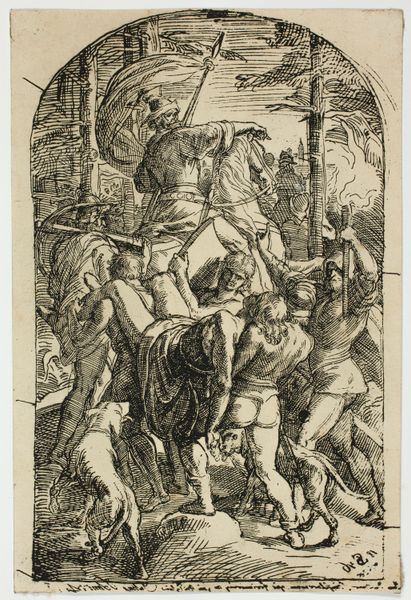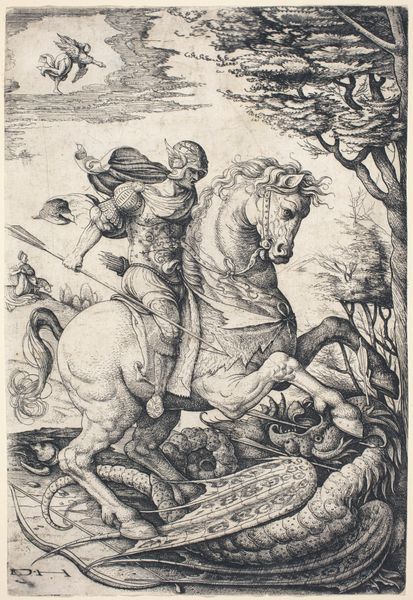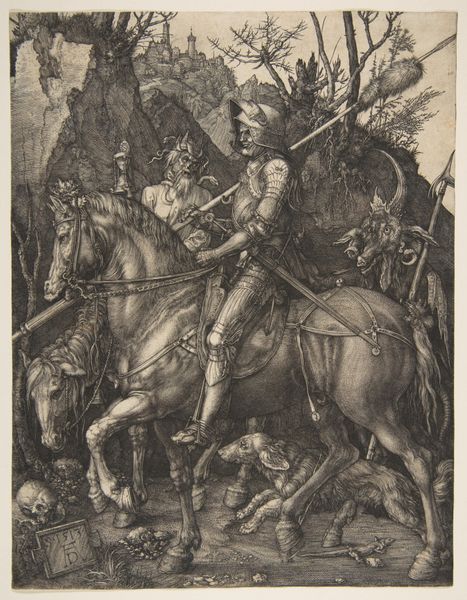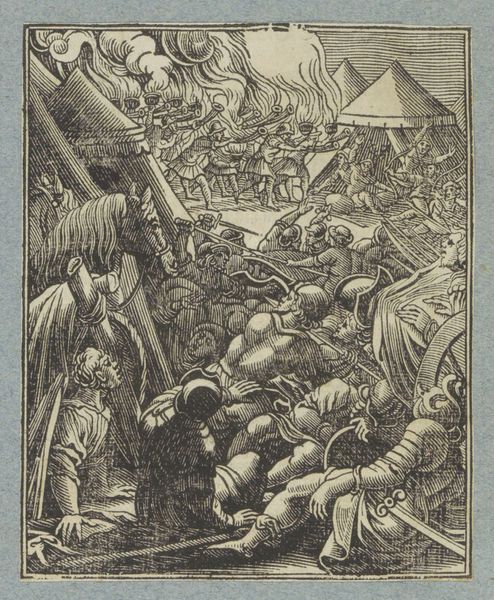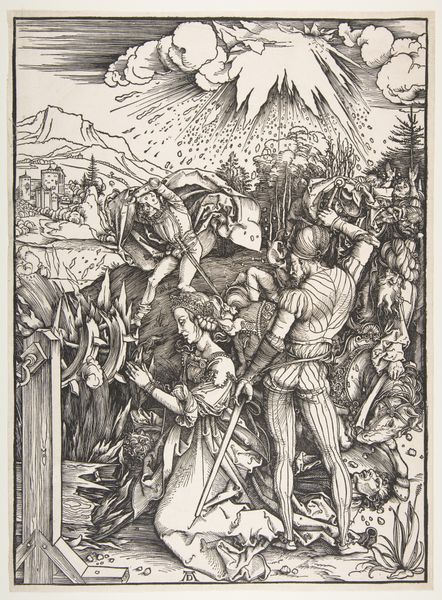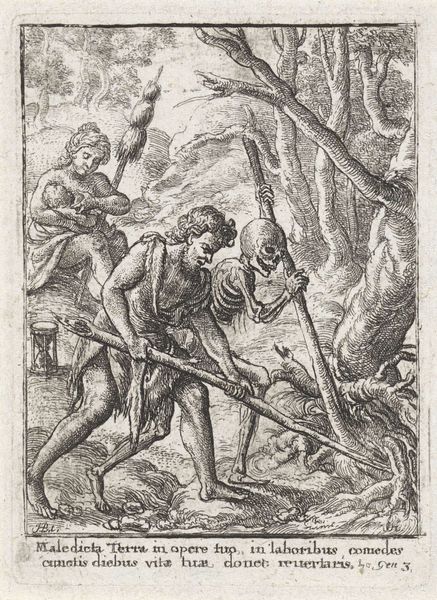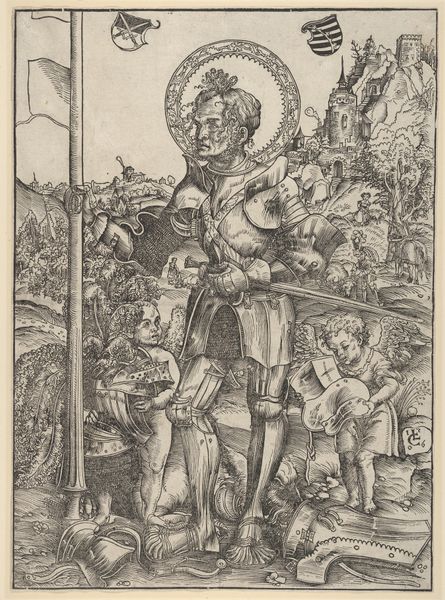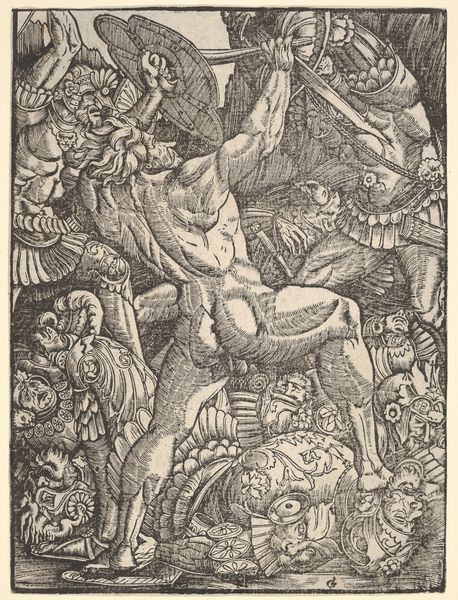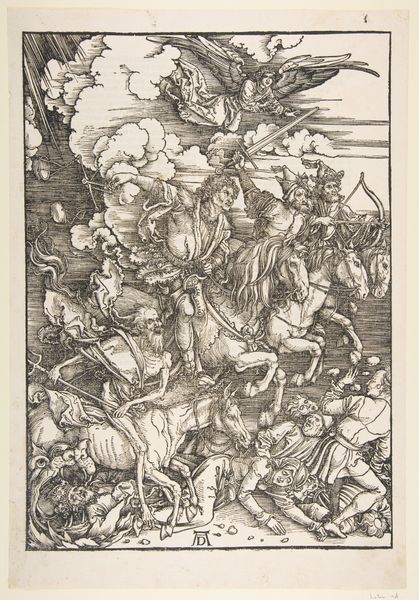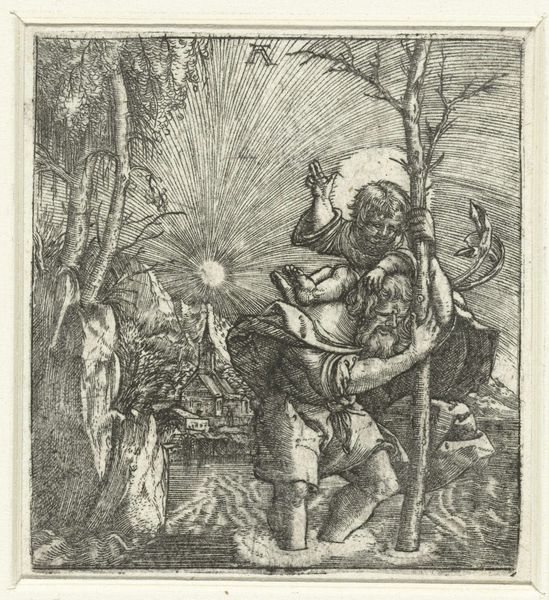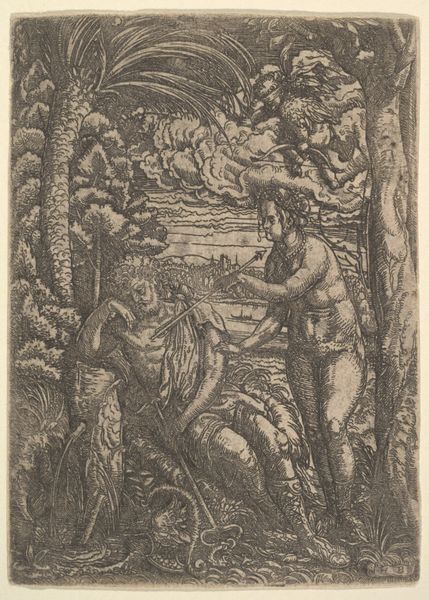
print, woodcut
# print
#
figuration
#
woodcut
#
history-painting
#
northern-renaissance
Copyright: National Gallery of Art: CC0 1.0
This is Hans Wechtlin's woodcut print, "Knight and the Servant" made in the early 16th century. The composition is striking, dominated by the imposing figure of the knight on horseback set against a dense, shadowed forest. Wechtlin uses the stark contrast of light and shadow to create depth and texture, especially noticeable in the knight's armor and the forest foliage. The lines are intricate, and the detailing of the feathers and armor is remarkable for the medium, lending a tactile quality to the image. This attention to detail, however, isn’t merely decorative; it serves to emphasize the power and status of the knight, creating a visual hierarchy with the servant, who appears less defined. The visual language speaks to contemporary ideas of social order, but also hints at a destabilization of fixed meanings. By casting the knight in shadow and placing him in the wilderness, Wechtlin complicates the traditional heroic image. Thus, the artwork engages in the broader cultural discourse about authority.
Comments
No comments
Be the first to comment and join the conversation on the ultimate creative platform.
